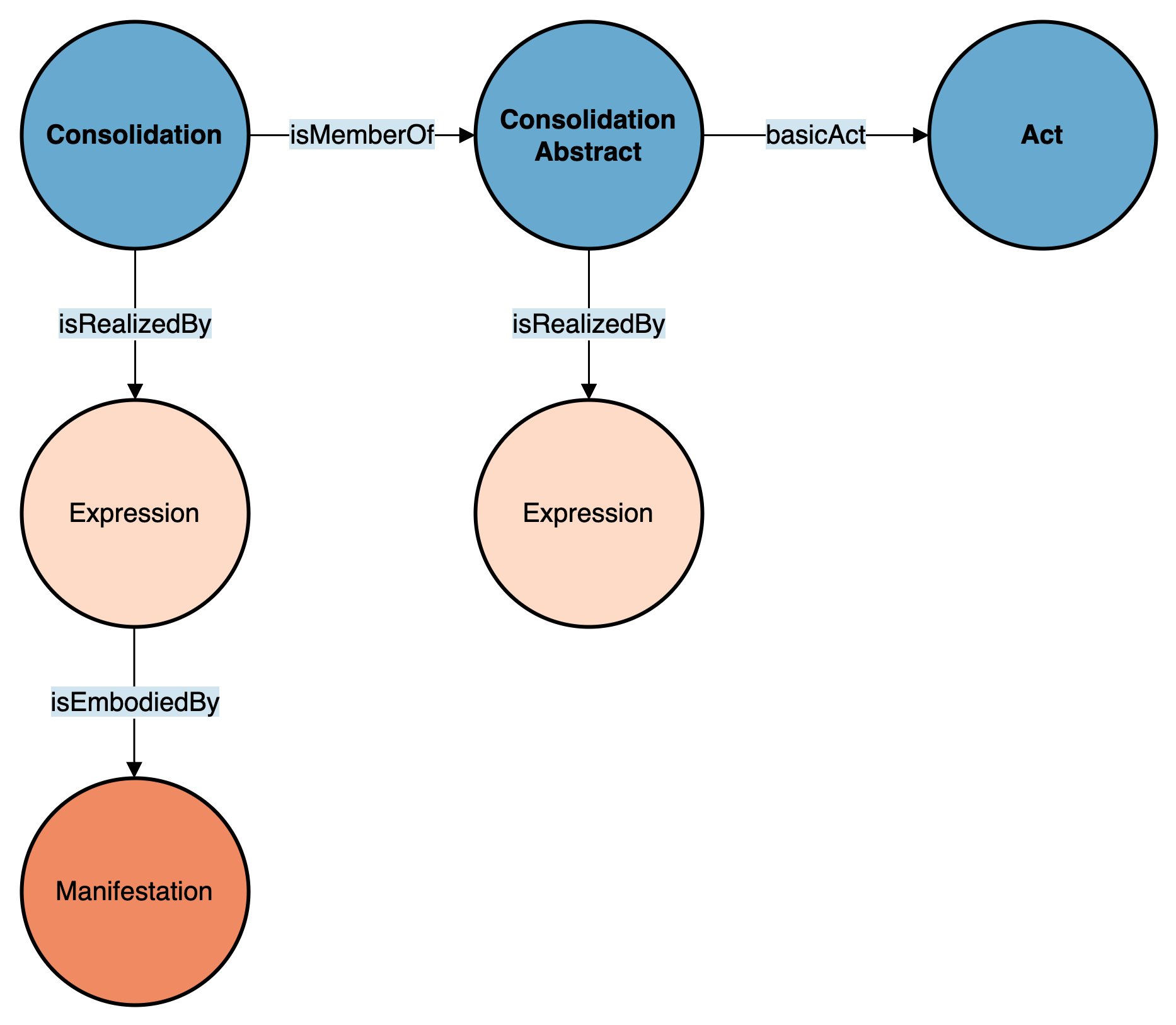Classified Compilation (CC)#
The Classified Compilation (CC) (also known as Systematic Compilation) is according to the lexicon of parliamentary terms a regularly updated and revised collection of the legislative resources of the Official Compilation arranged under subject headings.
An important aspect of the Classified Compilation is the classification of the entries according to a legal taxonomy. A deeper explanation of the Classified Compilation is also available in German/French/Italian.
This part explains all the important objects that build an entry in the Classified Compilation and it does so with the help of the federal constitution as an example of an entry in the Classified Compilation.
Hint for legal laypersons
Entries in the Classified Compilation are consolidations of entries in the Official Compilation. The main reason for having a Classified Compilation is a better usability of the legislative resources because the Classified Compilation represents the current state of a legislative resource.
It is important to realize that the Classified Compilation is not legally binding, the source of the “true law” is always the Official Compilation.
Example#
Throughout this sub-page, the federal constitution is used as an example of an entry in the Classified Compilation.
URI#
The URI of an entry in the Classified Compilation contains the following parts:
Standard namespace and path:
https://fedlex.data.admin.ch/eli/the part
cc/denotes the Classified Compilation, meaning that this URI identifies something that is part of the Classified Compilation of the federal lawYYYY/is the year of the publicationIDan identifier that has no specific meaning
The ID part has no specific meaning but is following the basic act in the Official Compilation. So the URI of an entry in the Classified Compilation can be created by replacing the oc in the URI of the basic act with cc. E.g. the URI of the federal constitution in the Official Compilation is https://fedlex.data.admin.ch/eli/oc/1999/404 and the URI of the federal constitution in the Classified Compilation is https://fedlex.data.admin.ch/eli/cc/1999/404. This does not hold true for cases where the base act is not part of the Official Compilation but of the Federal Gazette. In this case, the fga part is replaced by cc and a suffix _fga is appended to the ID part E.g. https://fedlex.data.admin.ch/eli/fga/2012/1262 becomes https://fedlex.data.admin.ch/eli/cc/2012/1262_fga. There are other special cases like https://fedlex.data.admin.ch/eli/cc/2012/136 is based on https://fedlex.data.admin.ch/eli/fga/2008/1057.
General Structure#
Every entry in the Classified Compilation is of type jolux:ConsolidationAbstract.
jolux:ConsolidationAbstract
The owl:Class jolux:ConsolidationAbstract is used for entries in the Classified Compilation.
It is a consolidation because it consolidates different entries from the Official Compilation into a single document that shows the current state. The term abstract is not so much meant as a summary but as an abstraction.
A jolux:ConsolidationAbstract has a jolux:Expression attached for representing the title and abbreviation in different languages of this consolidation because this does not change. But there are no jolux:Manifestation these only exist for jolux:Consolidation.
jolux:Consolidation
The owl:Class jolux:Consolidation is used for versions that represent a jolux:ConsolidationAbstract at a specific time. It is of the same abstraction level as jolux:Work and all jolux:Consolidation are also jolux:Work.
The different jolux:Consolidation are no “deltas” of the changes but always the complete state a the specific point in time.
For jolux:Consolidation, the additional abstraction levels jolux:Expression and jolux:Manifestation are usually also available for all entries. This excludes some older ones and those that are not yet published.
The connection between jolux:Consolidation and jolux:ConsolidationAbstract is made with jolux:isMemberOf.
jolux:isMemberOf
The object property jolux:isMemberOf is used to connect a jolux:Consolidation to a jolux:ConsolidationAbstract. It is also used to connect the weekly bulletins of the Official Compilation to the yearly collection.
Each jolux:ConsolidationAbstract is based on an jolux:Act through jolux:basicAct.
jolux:basicAct
The object property jolux:basicAct is used to connect a jolux:ConsolidationAbstract to a jolux:Act. The connected act is the first version of the consolidation.
The following figure shows the general structure of an entry in the Classified Compilation:

General structure of an entry in the Classified Compilation.#
Legal Taxonomy#
As the name Classified Compilation suggests, there is a classification scheme that sorts the entries in the Classified Compilation according to a legal taxonomy. This taxonomy is hierarchical and formulated as vocabulary.
Datatype Properties#
jolux:ConsolidationAbstract#
jolux:Consolidation#
Object Properties#
jolux:ConsolidationAbstract#
Object properties that point to a vocabulary entry:
Object properties that point to an individual:
jolux:Consolidation#
Object properties that point to an individual:
SPARQL Examples#
The following SPARQL query shows all the different versions of the federal constitution:
PREFIX jolux: <http://data.legilux.public.lu/resource/ontology/jolux#>
SELECT * WHERE {
?consolidation jolux:isMemberOf <https://fedlex.data.admin.ch/eli/cc/1999/404>.
}
The following SPARQL query gives the PDF link to the latest version of the constitution in English through a chain to jolux:Consolidation, jolux:Expression and jolux:Manifestation:
PREFIX jolux: <http://data.legilux.public.lu/resource/ontology/jolux#>
SELECT * WHERE {
?work jolux:isMemberOf <https://fedlex.data.admin.ch/eli/cc/1999/404>;
jolux:dateApplicability ?date;
jolux:isRealizedBy ?expression.
?expression jolux:language <http://publications.europa.eu/resource/authority/language/ENG>;
jolux:isEmbodiedBy ?manifestation.
?manifestation jolux:format <http://publications.europa.eu/resource/authority/file-type/PDF>;
jolux:isExemplifiedBy ?url.
} ORDER BY DESC(?date)
LIMIT 1